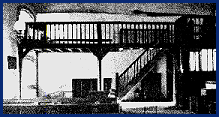
Church and chapel 5
The Anglican church in Wales
A new network of schools
In contrast to the vibrant nonconformist sects, the Church of
England often seemed remote and anglicized and too closely associated
with the land owning classes.
The growing number of evangelicals within the church were anxious
about the massive success of nonconformity, and the National
Society was founded in 1811 with the intention of creating
a network of schools where the children of the poor would be
taught in accordance with the beliefs of the established church.
These schools benefited from the support system of the diocesan
structure and the endowments of the gentry.
In 1833 there were almost 150 National schools in Wales, and
by 1847 there were a further 231.
Safeguarding Welsh culture
In the early 19th century, Bishop Thomas Burgess of St David’s
strove to meet the challenge.  He was a supporter of Welsh language
preaching in church and was behind the creation of the Cambrian
Societies which organised local eisteddfodau. Clergy
in border parishes like Kerry and Abergavenny were active in
safeguarding Welsh literature and culture.
He was a supporter of Welsh language
preaching in church and was behind the creation of the Cambrian
Societies which organised local eisteddfodau. Clergy
in border parishes like Kerry and Abergavenny were active in
safeguarding Welsh literature and culture.
In 1847 a damning report of a commission into the provision of
education in Wales was published. The commissioners totally failed
to understand the difficulties of educating Welsh speaking children
in English, and their prejudices were further fed by the evidence
of some clergy who blamed poor educational performance on a chapel
upbringing. There was a violent tide of resentment against this
report and against the Anglican Church, and for many years the
clergy had to contend with the feeling in many circles that the
church had somehow betrayed the Welsh people.
There are 8 pages in this sequence. Use the box links below to view the other pages.